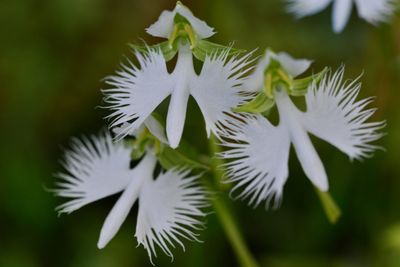Selecting Orchids for Zone 8
Cold-hardy orchids are terrestrial, which means they grow on the ground. They are generally much tougher and less finicky than epiphytic orchids, which grow in trees. Here are a few examples of zone 8 orchids: Lady Slipper orchids (Cypripedium spp.) are among the most commonly planted terrestrial orchids, probably because they are easy to grow and many can survive extremely frigid temperatures as low as USDA plant hardiness zone 2. Check the tag if you purchase Lady Slipper orchids in zone 8, as some species require the cooler climates of zone 7 or below. Lady’s Tresses orchid (Spiranthes odorata) is so named because of the small, fragrant, braid-like flowers that bloom from late summer until the first frost. While Lady’s Tresses may tolerate average, well-watered soil, this orchid is actually an aquatic plant that thrives in several inches (10 to 15 cm.) of water. This cold hardy orchid is suitable for growing in USDA zones 3 through 9. Chinese ground orchid (Bletilla striata) is hardy to USDA zone 6. The flowers, which bloom in spring, may be pink, rose-purple, yellow, or white, depending on the variety. This adaptable orchid prefers damp, well-drained soil, as consistently soggy soil may rot the bulbs. A spot in dappled sunlight is ideal. White Egret orchid (Pecteilis radiata), hardy to USDA zone 6, is a slow-growing orchid that produces grassy leaves and white, bird-like flowers during the summer. This orchid likes cool, moderately moist, well-draining soil and either full sun or partial shade. White Egret orchid is also known as Habenaria radiata. Calanthe orchids (Calanthe spp.) are hardy, easy-to-grow orchids, and many of the more than 150 species are suitable for zone 7 climates. Although Calanthe orchids are relatively drought tolerant, they perform best in rich, moist soil. Calanthe orchids don’t do well in bright sunlight, but they are a great choice for conditions ranging from dense shade to early morning sunlight.
